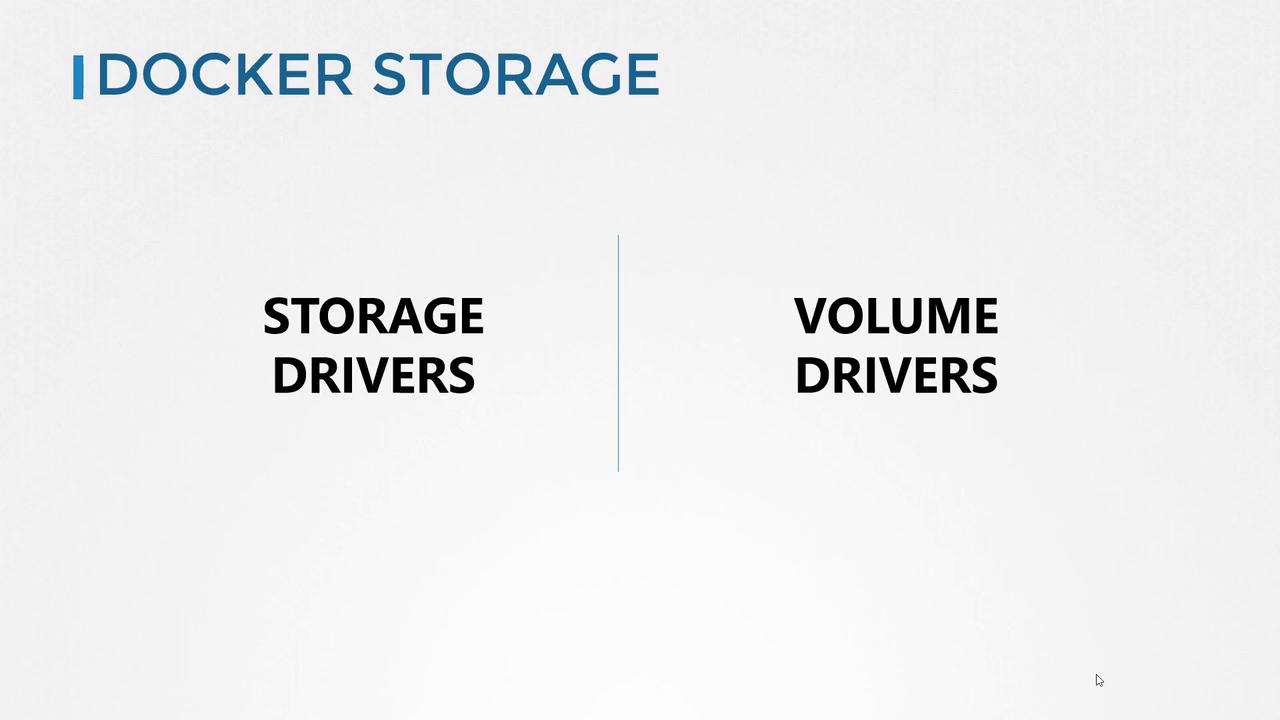Docker Certified Associate Exam Course
Docker Engine Storage
Docker Storage
Understanding how storage works in Docker is a critical first step before tackling storage in Kubernetes. Docker storage is built on two core components:
- Storage drivers that manage the container’s writable layer
- Volume driver plugins that provide persistent storage beyond the container lifecycle
In this guide, we’ll explore both in detail—starting with storage drivers, and then moving on to volume drivers.

Why Docker Storage Matters
Effective storage management ensures data integrity, performance isolation, and smooth scaling. Whether you’re running single-node applications or distributed clusters, choosing the right storage mechanism can make or break your deployment.
Note
Docker containers are ephemeral by design. Without proper use of volumes or external storage, any data written inside a container will be lost when the container stops or is removed.
Key Concepts
| Component | Function | Typical Use Case |
|---|---|---|
| Storage Drivers | Manages how the container filesystem is graphically layered and stored on the host. | Optimizing I/O performance and space utilization. |
| Volume Driver Plugins | Interfaces with external storage systems (local, cloud, SAN, NFS). | Persisting data across container restarts and nodes. |
Storage Drivers
Storage drivers implement the copy-on-write layers for images and containers. Docker supports several drivers—overlay2, aufs, btrfs, devicemapper, and more—each with trade-offs in performance and features.
Common Storage Drivers
- overlay2: The recommended default on modern Linux kernels.
- aufs: Historically popular but less maintained.
- btrfs: Offers snapshots and quotas.
- devicemapper: Used for block-level storage on older systems.
For a full list and configuration options, see the Docker Storage Drivers documentation.
Volume Driver Plugins
While storage drivers handle the container’s writable layer, volumes are designed for persistent data. Docker volumes can be managed by built-in drivers or extended via plugins to connect with cloud or network storage.
Built-in Volume Drivers
- local: Stores data on the Docker host filesystem.
- tmpfs: In-memory storage, cleared at shutdown.
Third-Party Plugins
You can integrate with storage solutions like AWS EBS, Azure Disk, or NFS using volume driver plugins:
docker plugin install vieux/sshfs
docker volume create \
--driver vieux/sshfs \
--opt sshcmd=user@host:/remote/path \
ssh_volume
Warning
When using network-backed volumes, verify your plugin’s compatibility and performance constraints to prevent I/O bottlenecks in production.
Next Steps
- Explore Docker Volumes for advanced volume management.
- Learn how to mount volumes into containers with
docker run --mountanddocker-compose. - Compare Docker’s storage options with Kubernetes PersistentVolumes and CSI drivers in our Kubernetes storage overview.
Links and References
Watch Video
Watch video content